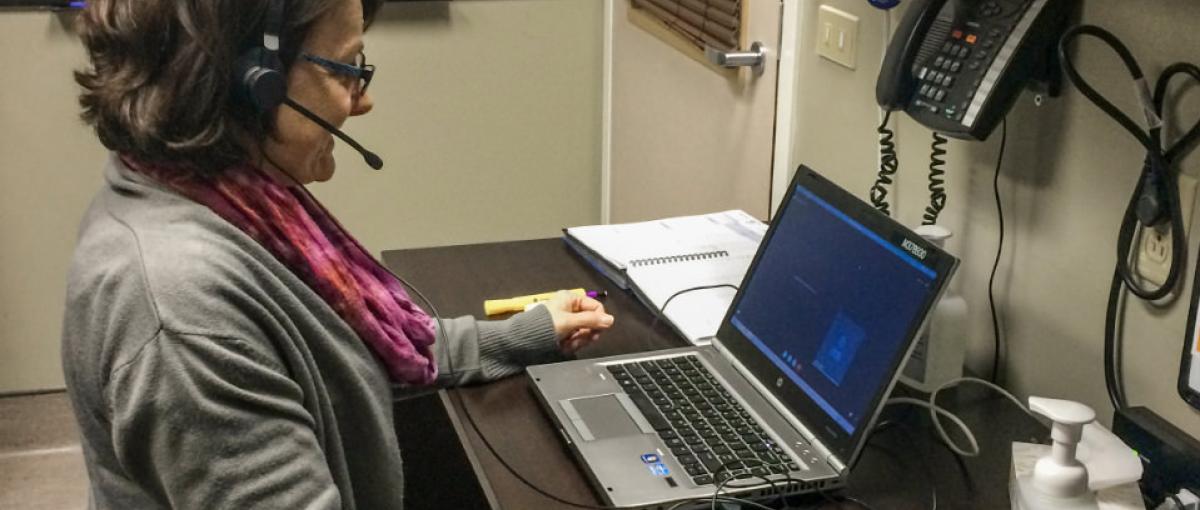Patients receive at-home rehabilitation with a click of a mouse
Camrose team is the first in Alberta to offer home-based, real-time video conferencing using Skype for Business

March 21, 2018
By Esther Kim, Communications Advisor, Covenant Health
Receiving timely access to rehabilitation services can be challenging for stroke survivors living in remote, rural Alberta. Travel affects access to therapists and rehabilitation intensity.
The Stroke Early Supported Discharge team at St. Mary’s Hospital in Camrose set out to overcome those travel barriers. The solution? Skype for Business video conferencing, launched last summer, which reduces travel and increases timely access to therapists without compromising quality of care or client satisfaction.
“We’re excited to be using video conferencing through Skype for Business to connect with clients in their homes providing daily rehabilitation,” says Melissa Sztym, Stroke Early Supported Discharge Team Lead and Occupational Therapist at St. Mary’s Hospital.
“We’re able to reduce travel, which builds capacity within our team to spend more time providing rehabilitation to our clients.”
Prior to Skype for Business, Melissa and her team would travel up to 15,000 kilometres a month on the road to see rural stroke patients like 62-year-old Bruce Swift. He lives just east of Ponoka and was not able to drive for 30 days after his stroke.
For Bruce, video conferencing made it easy to access health care.
“The convenience of it all just made more sense to me. They don’t have to drive all the way out to see me, and I don’t have to drive to a hospital to access outpatient care. It was easy to connect," says Bruce. “The support I received was amazing.”
Bruce was the team’s first client during the pilot phase. His speech was his primary concern following his stroke. “Through the Skype process I still got to ask the same questions. It was just as good as meeting one of the therapists face to face,” says Bruce. “It achieved the same thing but was far more convenient for me.”
The team has completed 68 sessions since implementation and the initiative is catching on. The Camrose team is assisting with the expansion of this model of care to the seven other Stroke Early Supported Discharge teams across Alberta.
“Skype for Business allows us to deliver increased therapy to stroke clients in a timely manner with our existing resources,” says Melissa.
Part of that includes training clients on the technology. Therapy assistants equipped with video conferencing equipment provide education to help clients get set up using their computers.
“Sometimes they can be hesitant, thinking they won’t be able to get it up and running, but when I’m there for an initial visit, I make sure they know all of the steps and that the video and audio are working properly. We practise until they feel comfortable,” says Kelsey Stepanko, Therapy Assistant at St. Mary’s Hospital. Rural stroke survivors are assessed on a case-by-case basis to see whether they are a right fit for Skype for Business.
For Bruce, that easy access means he can spend more time getting back to normal life. “I run a business and work out of my house and travel for work. Skype for Business is so innovative and it was a great fit for me.”